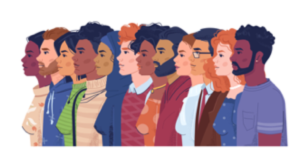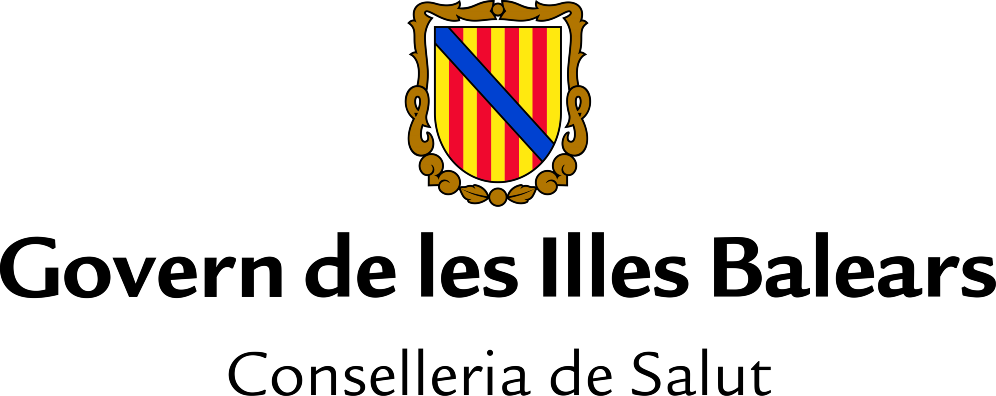
Previous notes:
To read this article, it may help to revise some concepts that are used repeatedly in it. The field of sexuality is so alive that one must try to keep updated on some concepts, especially when they are so interrelated. The list could be very long, but since we already know some of them, here are the essential ones:
- LGBT+: you must have seen the initialism referred to sexual diversities such as LGBTIAQ+, LGTBIQ+, LGBTIQA+… In this article, we will refer to all possible identities as LGBT+ (Lesbians, Gays, Bisexuals, Transgender people and any other minority sexual identity. The longest initialism also stands for intersexual, queer and asexual people).
- Sexual Identity: This article mentions sexual identity several times. This term includes not only sex, but also gender, and some others such as sexual-affective orientation, relational orientation and erotic orientation. All of them are interrelated, variable and continuously build an important part of our global identity: the sexual one. Known this way, note that gender is conceived as part of sexual identity in this article. However, many will agree on that gender identity should be studied as a separated concept from sexual.
- Gender: it refers to the concepts of masculine and feminine, that are socially and culturally built. There are several behaviours, attitudes, emotions, clothing, roles, professions, etc., that are considered for each gender. Since they are known as social constructs, then biological sex won’t be necessarily linked to them. In this regard, we could start talking about gender identity. For instance, there may be cases in which, being biologically female, they feel like belonging to the male gender, and vice versa. This get us to transgender people. In addition, gender may or may not be expressed, more or less subtly, and with or without others’ recognition. Finally, some people do not believe in this binary scheme, and others feel themselves flowing between both poles.
- Hetero-cis-normativity: status quo from which only one way is assumed as valid for us to develop as humans: being straight and identified with the gender assigned at birth and coinciding with our biological sex (cis-gender people).
- Sexual and gender diversity: It is the term that helps us to cover the full range of identities occurring through the combination of these two concepts of our self (sex and gender).
What does LGBT+ Affirmative Psychology mean?
LGBT+ Affirmative Psychology is the psychology applied to the specific difficulties affecting the mental health of people with sexual and gender diversity (this means lesbian women, gay men, bisexual people, transgender people, and all those included in the spectrum of queer diversity).
From this application area, on the one hand, it is intended to help professionals become familiar with the collective’s issues. And on the other hand, many tools are given to LGBT+ people so that they can face those challenges of their respective lives.
This field is originally known as Gay Positive Psychology, since it was intended for lesbian women and gay men in its conception. However, as we have broadened our sexual and gender perspective, new realities have emerged and deserve to be addressed.
Note that it is common to find professionals who specialize in a specific subgroup of the collective (lesbians, gays, asexual people, or other). This is because, even though they all share similar processes, each group faces different difficulties and has its own needs.
What is not LGBT+ Affirmative Psychology?
Since, unfortunately, there is still a belief that people with a non-normative sexual identity are “abnormal”, “deviant” or “sick”, it is possible that we find people confusing Affirmative Psychology with the so-called “conversion therapies”.
Traditionally, conversion therapies aim to change a person’s sexual orientation from a non-normative one (normally homosexual) to what they consider to be “natural” or “normal”: heterosexual. There are also analogous therapies for trans people, who may be considered subjects with a delusional disorder.
These misnamed “therapies” are not only ineffective, but also lead to serious cognitive and emotional damage in the people who undergo them. They are usually linked to religious communities and their practice is prohibited both in our country and in many others. Even so, some groups and professionals still are found practicing them covertly.
In contrast, Affirmative Psychology offers a contrasting perspective to those practices. It offers people education in human sexuality and diversity, with the aim of promoting self-knowledge, self-acceptance and the free expression and development of one’s own personality.
How does LGBT+ Affirmative Psychology come about?
In this section we should start talking about Gay Affirmative Psychology, since, as mentioned before, it was born to be applied to homosexual people. Its conception begins the moment the scientific community stopped considering homosexuality as a psychiatric disease. This event occurred in 1973, when the American Psychiatric Association (APA) removed Homosexuality from the Diagnostic and Statistical Manual of Mental Disorders (DSM). Much later, in 1990, the World Health Organization (WHO) followed suit, doing the same in its International Classification of Diseases (ICD). Transgender people had to wait even longer. They were depathologized in 2013, with the last DSM edition (5TH ed.; DSM-5; American Psychiatric Association, 2013). The “disorder” label was removed to call it “Gender dysphoria”. For its part, the WHO made the same in 2018, calling it “Gender incongruence” (11th ed.; ICD-11; World Health Organization, 2019).
As you can imagine, the gesture of both institutions caused a stir in public opinion, but also within the scientific community. Even today there are those who question the decision, laying on the table all kinds of conspiracy theories about how it was made and the role played by the pressures of certain protest groups of the time.
Let us not forget that before considering homosexuality a disease, we came from long periods (centuries) in which it was conceived as something worse, if possible, and deserving of all kinds of harassment (persecution, extortion, death sentences, etc.). Undoubtedly, the persecution of the collective throughout history has been and continues to be a long and agonizing process, the mark of which is not easily erased. In addition to being painful, it has been and continues to be in vain, so sexual and gender diversity has not been eradicated, which demonstrates that it is an integral part of the human being.
However, and as Martín (2016) points out, the decision was not based on those pressures (more than justified), but on previous studies such as those by Evelyn Hooker (1957), whose undoubting methodological quality and results leave no room for doubt about the step that needed be taken. Today, many more works on the subject can be consulted on the APA website.
It is then, from the withdrawal of homosexuality from psychiatric nosologies, when good practice guidelines are designed to address the mental health of people belonging to sexual minorities.
These are 16 guidelines, updated since February 2021, in which APA informs and provides tools to psychologists on LGBT+ issues. They cover areas such as family and social relationships, the impact of stigma and discrimination, aspects on education and the workplace, and research on LGBT+ issues. They can be consulted in https://www.apa.org/about/policy/psychological-sexual-minority-persons.pdf.
What is LGBT+ Affirmative Psychology for?
If we refer to individual interventions, LGBT+ Affirmative Psychology tries tot take care of the aspects affecting the collective members’ psychological well-being. They are the following:
- The accepting process of one’s own sexual identity.
- The minority stress, the LGBT+phobia side-effects, and those dysfunctional experiences due to one’s own sexuality.
- Differential experiences in some areas, such as the sexual area, affective relationships, and socialization.
Let’s see what each one consists of:
- The accepting process of one’s own sexual identity.
Reaching acceptance of one’s own sexual identity is not always an easy task (we are referring to identities other than the heterocisnormative one). We know that very harsh realities exist in other parts of the planet, but without going very far, many people continue having great difficulties in our country, not only in accepting themselves, but in freely living their sexuality.
Let us understand that realizing who they are is not enough for people with non-normative identities. After that, they need to face the reality that surrounds them, in which there is still a deep-rooted stigma related to minority identities. Some unknowns these people may face are: “what will my parents think? Will my friends leave me behind? Will I ever be able to have a partner? What will they say about me if I hold hands with my partner?
Such fears can be very disabling, as much as they can repress people for so long in their lives, with the psychological consequences this entails. It is the psychologist’s job to help LGBT+ pople taking the steps to face these fears and thus achieve a full and happy life, in tune with who they really are.
- Minorities stress, the LGBT+phobia side-effects and those dysfunctional experiences due to one’s own sexual identity.
Linked to the previous point, the stigma and preconceived ideas that mask our reality will influence our idea of ourselves, the decisions we make and the way we relate to the environment. This fact leads to the phenomenon known as internalized LGBT+phobia. It is about “aversion towards one’s own sexual feelings and behaviors”, as well as towards other LGBT+ people. It also includes the denigration of minority sexualities, the fear of stigma, the unwillingness to reveal oneself as one is and the acceptance of social stereotypes around the collective (definition adapted from the term “internalized homophobia”, from Herek et al. (1997), consulted in Martin (2016)).
Said rejection of oneself implies many things that can later be a great burden for the person: acceptance of insults and lgbt+phobic attitudes, attachment to toxic friendships, involvement in sentimental relationships that do not make sense, feeling pressured to enter clandestine environments to being able to have sexual relations, and a long etcetera depending on each case.
Even those who have already accepted and freely live their sexual identity, continue to be faced with unpleasant situations such as insults openly on the street, denial by their family, problems finding job, etc.
All of this as a whole leads to sustained stress over time, which ends up taking its toll on the emotional well-being of LGBT+ people. To manage this stress, professional help may be necessary.
- Differential experiences in some areas, such as the sexual area, affective relationships, and socialization.
It must be considered that sexual and gender diversity is usually linked to a whole range of experiences that differ a lot from the hetero-cis people’s typical biography. This fact is entailing a whole diversity of new lifestyles, ways of relating, communication styles, etc., that may characterize LGBT+ people, and may be the reason for a continuous conflict against our culture and the social schemes in which we are immersed.
Some examples of the great variety that we find among these differential experiences are: adoption processes for homoparental couples, surrogacy, entering into a sexual transition process, learning to conceive sexual relationships as an intersex person, living with HIV, having to maintain limits with a family that does not accept our condition, being part of LGBT+ activist groups, experimenting with open romantic relationships, etc.
These different ways of conceiving life are new even for LGBT+ people, who, indeed, build them continuously in their daily lives. This can lead to a whole range of conflicts, insecurities and adaptive problems. Psychologists can help in the conception and clarification of these new scenarios, and thus help LGBT+ people to establish their lives in the way they feel most satisfied.
If you are a gay, lesbian, bisexual, transgender person, or with any other non heterocisnormative identity, and you are going through some difficulty in your life that is related to it, you can come to our centre. We will analyse your case in order to help you cope with those issues and achieve a better life quality.
References:
American Psychiatric Association – APA. (2014). Manual diagnóstico y estadístico de los trastornos mentales DSM-5 (5a. ed. –.). Madrid: Editorial Médica Panamericana.
Herek, G. M., Gillis, J. R., Cogan, J. C., & Glunt, E. K. (1997). Hate crime victimization among lesbian, gay, and bisexual adults: Prevalence, psychological correlates, and methodological issues. Journal of interpersonal violence, 12(2), 195-215.
Hooker, E. (1057). The adjustment of the male overt homosexual. Journal of Projective Techniques, 21, pp. 18-31.
Martín, G. J. (2016). Quiérete mucho, maricón: Manual de éxito psicoemocional para hombres homosexuales. Roca editorial.
World Health Organization (2019). International statistical classification of diseases and related health problems (11th ed.). http://icd.who.int/
Guillem Nicolau Coll.
Psychologist Col. No B-02773













